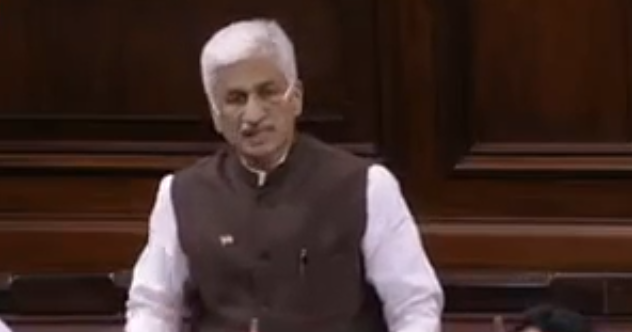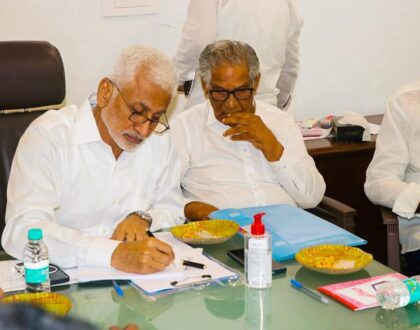Question On Engagement of children in mines

4223. SHRI V.VIJAYASAI REDDY:
Will the Minister of MINES be pleased to state:
(a) whether the Ministry is aware that kids as young as five years are being engaged to work in illegal Mica mines in Andhra Pradesh, Rajasthan, Bihar, etc,;
(b) whether it has also come to the notice of the Ministry that as per Thomson ReutersFoundation Investigation Report, seven children were killed in two months of this year;
(c) if so, the details thereof; and
(d) the steps taken by the Ministry and how it is supplementing the efforts of the StateGovernment concerned to stop illegal mining of Mica and to protect small children?
ANSWER
THE MINISTER OF STATE (INDEPENDENT CHARGE) FOR POWER, COAL, NEW & RENEWABLE ENERGY AND MINES (SHRI PIYUSH GOYAL)
(a): The safety, welfare and health of workers employed in mines are regulated by the Mines Act, 1952 and the Rules and Regulations framed thereunder. These legal provisions are administered by the Directorate-General of Mines Safety (DGMS), under the Union Ministry of Labour & Employment. As per section 40 of the Mines Act, 1952, no person below eighteen years of age shall be allowed to work in any mine or part thereof. Directorate General of Mines Safety (DGMS) officers regularly inspect the mines and verify if persons below eighteen years are employed in the mine, action as provided under the law is taken based on the findings of the inspections. The Child & Adolescent Labour (Prohibition and Regulation) Act, 1986 being administered by the Ministry of Labour and Employment, prohibits the engagement of children below 14 years of age in any employment or work. Therefore, data on engagement of child labour in mines in the country, including illegal mining of mica, is not maintained by the Ministry of Mines nor has any incidence been reported to the Ministry of Mines in this regard.
(b) & (c): The matter was investigated by the officers of DGMS and they have reported that nosuch accident has occurred.
(d): As per Section 23C of the Mines and Minerals (Development and Regulation) Act, 1957, State Governments have been empowered to frame rules for preventing illegal mining, transportation and storage of minerals and for the purposes connected therewith as a result of which the prevention and control of illegal mining comes under the legislative and administrative jurisdiction of State Governments.
However, for controlling/monitoring of illegal mining in the country, the Central Government has, inter-alia, taken the following measures:
The MMDR Act, 1957 was amended through the MMDR Amendment Act, 2015 which came into effect from 12th January, 2015. The Amendment Act contains, inter alia, stringent punitive provisions for combating illegal mining. Illegal mining has been made punishable with imprisonment for a term which may extend to five years and with fine which may extend to five lakh rupees per hectare of the area. Provisions have been made for setting up of Special Courts for the purpose of providing speedy trial of offences relating to illegal mining.
IBM has entered into a MoU with National Remote Sensing Centre (NRSC), for a pilot project “Sudoor Drushti” to demonstrate the feasibility of using High Resolution Satellite imagery and Digital Elevation Model (DEM) in monitoring mining activities / changes over a period of time over selected group of mines.
State Governments have been asked to frame Rules under section 23C of Mines & Minerals (Development & Regulation) Act, 1957 to enable them to provide for inspection, checking & search of minerals at the place of excavation, storage and during transit. The Rules would also provide for establishment of check-post and weigh-bridges at important centers. So far 20 States have framed Rules namely, Andhra Pradesh, Bihar, Chhattisgarh Goa, Gujarat, Haryana, Himachal Pradesh, Jammu & Kashmir, Jharkhand, Karnataka, Madhya Pradesh, Maharashtra, Nagaland, Orissa, Punjab, Rajasthan, TamilNadu, Uttar Pradesh, Uttaranchal & West Bengal.
The Ministry of Mines, through IBM has developed the Mining Surveillance System (MSS), in collaboration with Ministry of Electronics and Information Technology (MEITY) and Bhaskaracharya Institute for Space Applications and Geo-informatics (BISAG), Gandhinagar, to use space technology for facilitating State Governments in curbing illegal mining activities in the country. MSS is a satellite-based monitoring system which aims to establish a regime of responsive mineral administration, through public participation, by facilitating State Governments in curbing instances of illegal mining.
******************
Recommended Posts

నెల్లూరు జిల్లా ముత్తుకూరు మండలంలోని నా స్వగ్రామం తాళ్ళపూడిని ఈరోజు సందర్శించడం చాలా సంతోషం కలిగించింది.
11/10/2023



